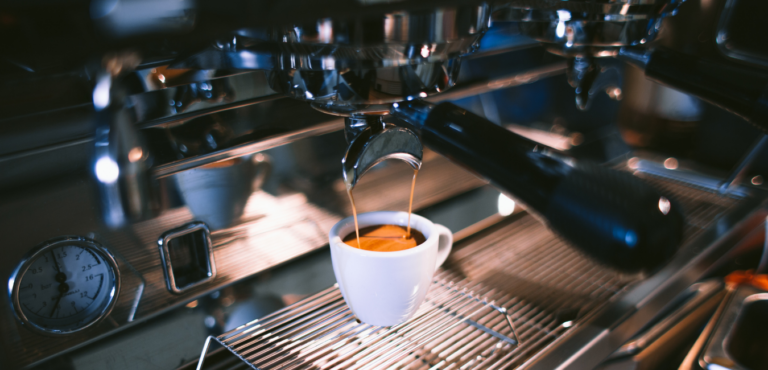Waves Of Coffee: A Definitive Guide
We don’t realize it, but the way we consume coffee today is entirely different from how our predecessors used to. The waves of coffee are a simplified way of marking each major innovation in this industry. They represent our journey and relationship with coffee in each era. As we’ve moved up each wave, the supply chain efficiency improved significantly. Today, we’re in the third wave of coffee, but it’s important to address what happened during the first and the second.
Waves Of Coffee – The First, The Beginning
People still debate on when exactly the first wave happened. Some say it dates back to the mid-1800s when coffee had started to become a traded commodity, and others believe that it happened much later, think early 1900s. Either school of thought agrees that the first wave marks the years when coffee consumption began to grow exponentially. During this period, coffee had become increasingly accessible and convenient to the daily drinker. Some of the important brands during the first wave were Folgers, Nescafe, Mr. Coffee, and Hill Bros Coffee.
The Second Wave
The second wave was accompanied by an increase in readily available coffee. In the 1970s, during the rising of Starbucks, coffee-to-go had become an essential. People wanted different flavors in their coffee, they wanted options, and Starbucks was the perfect place to satisfy their incipient thirst. Coffee was starting to become more than just a beverage. An experience, a social gathering, a place for all coffee-lovers alike.

Accompanied by the acceleration of the new coffee culture was a steep margin on the cost/cup. At this point, getting coffee from Starbucks was akin to luxury, but that didn’t hurt sales. It did the opposite. To an extent that it affected other industries too; like beer, spirits, and other beverages. They were everywhere, and everyone wanted to be at the hottest new hang-out in town. With a revolutionary change in the architecture and interior design of their coffee shops, Starbucks could captivate the nation to justify a higher price tag.
Coffee-based drinks like frappucinos, lattes, and americanos too had gained popularity during this period. Previously inaccessible coffee-based drinks were now available on every street corner, and this appealed to younger audiences. Some of the other important figures & brands during the second wave are SCAA, George Howell, and Howard Schultz.
The Third Wave
This brings us to the present; the third wave. A term first coined by Trish Rothgeb while defining the three major coffee movements till that point. This wave entails a much more sophisticated consumer, a bonafide coffee lover that knows what they want in a cup. A consumer that appreciates a quality product and is ready to break away from the old and embrace the new coffee culture. The third wave is a society where the efforts of everyone in the supply chain (producer, importer, roaster, barista, and consumer) are appreciated alike.

Sometimes the terms “third wave coffee” and “specialty coffee” are often confused to be the same. Third wave is less about the coffee and more about the mindset. It’s the philosophy of creating a cup that’s focused on service, education, and honoring the heartstrings of the coffee industry. Specialty coffee isn’t synonymous with the third wave, but rather coffee that scores above 80 points (out of 100) on the Specialty Coffee Association (SCA) scoring system. Another entity that scores coffee is Cup of Excellence (CoE). To read more about the different criteria for scoring coffee, here’s our recommended reading.
Direct trade practices, sustainability, traceability, lighter roasts, and an overall increase in quality are the elements of third-wave coffee that make it special. Specialty coffee that has been produced with these elements has the added flavor of good conscience. To adopt the third wave philosophy means to know the story behind each cup; a story written by those who make it a reality. Some of the important figures & brands of the third wave are the Specialty Coffee Association (SCA), Stumptown Roasters, and Intelligentsia to name a few.
The Fourth Wave Of Coffee
The fourth wave of coffee is still abstract. Is it the future, or has it already begun? The meaning of the fourth-wave needs to be crafted meticulously. Along with the highest optimization of all the elements in the third wave, its successor needs more. But with so many casual instances of “fourth wave” being thrown around, it’s starting to lose value. Here’s what it means to us at Bunafr.

A world where coffee roasting and high-quality green coffee are accessible for everyone. In other words, roasting coffee becomes as simple as cooking rice. Especially when you’ve got the Bunafr Smart Home Coffee Roaster. By democratizing roasting, we can create a truly personalized experience and drink hyper-fresh coffee while paying less than 1/4th of the cost. Eliminating the requirement for commercial-grade roasting empowers us to create a business model that tells us exactly where our coffee comes from. We can afford to buy top-tier green coffee and ensure that everyone is treated fairly because of the lowered cost and complexity in the supply chain. Our green coffee marketplace continues to surpass the limits of the third wave, trailblazing our way into the fourth. As we strive for a truly decentralized coffee ecosystem, our goals remain steadfast. Personalization, Cost/Cup, Traceability, and Sustainability.








